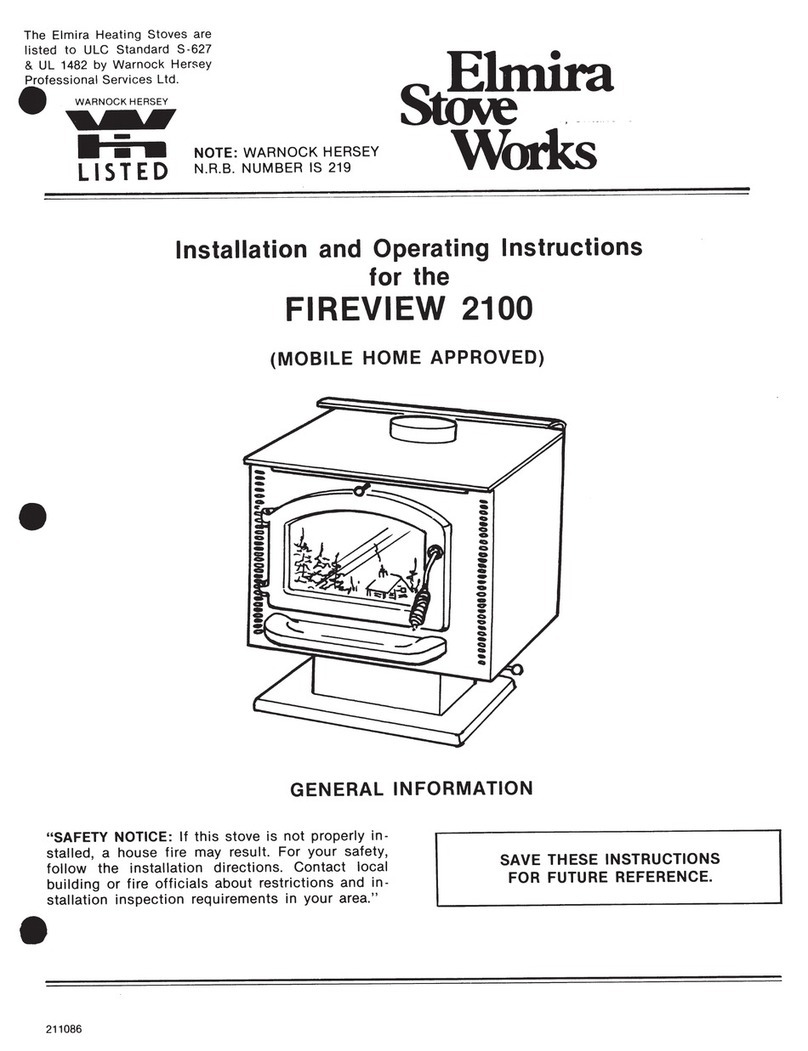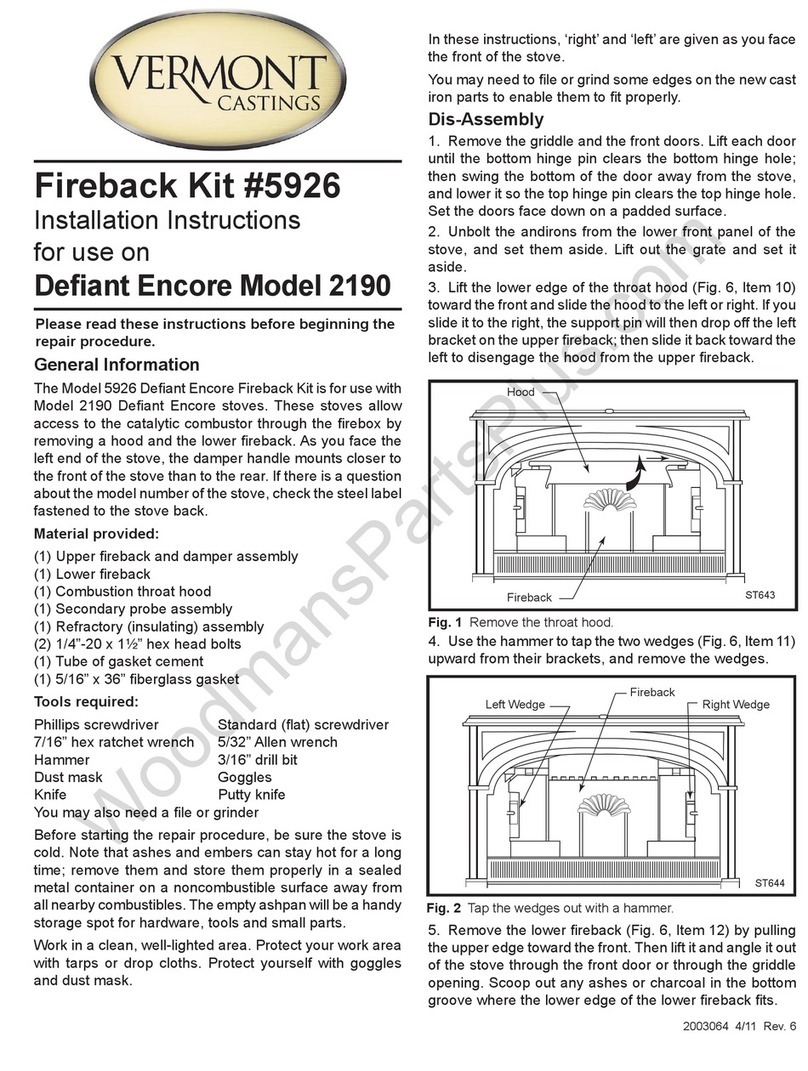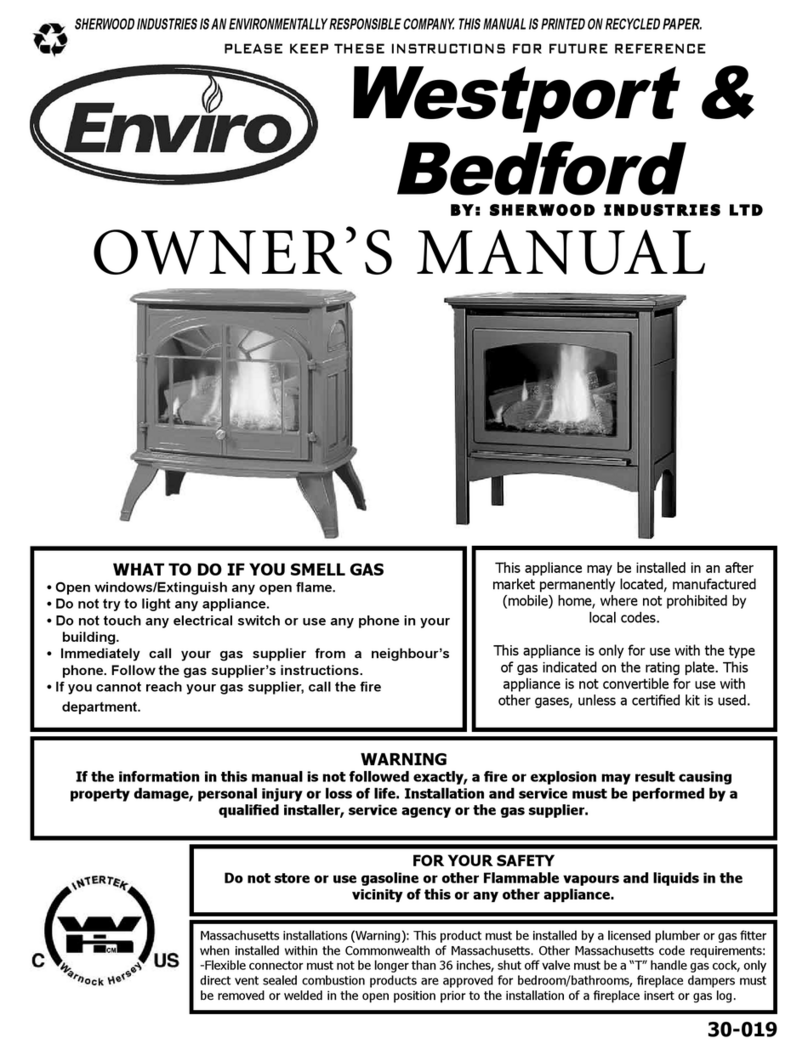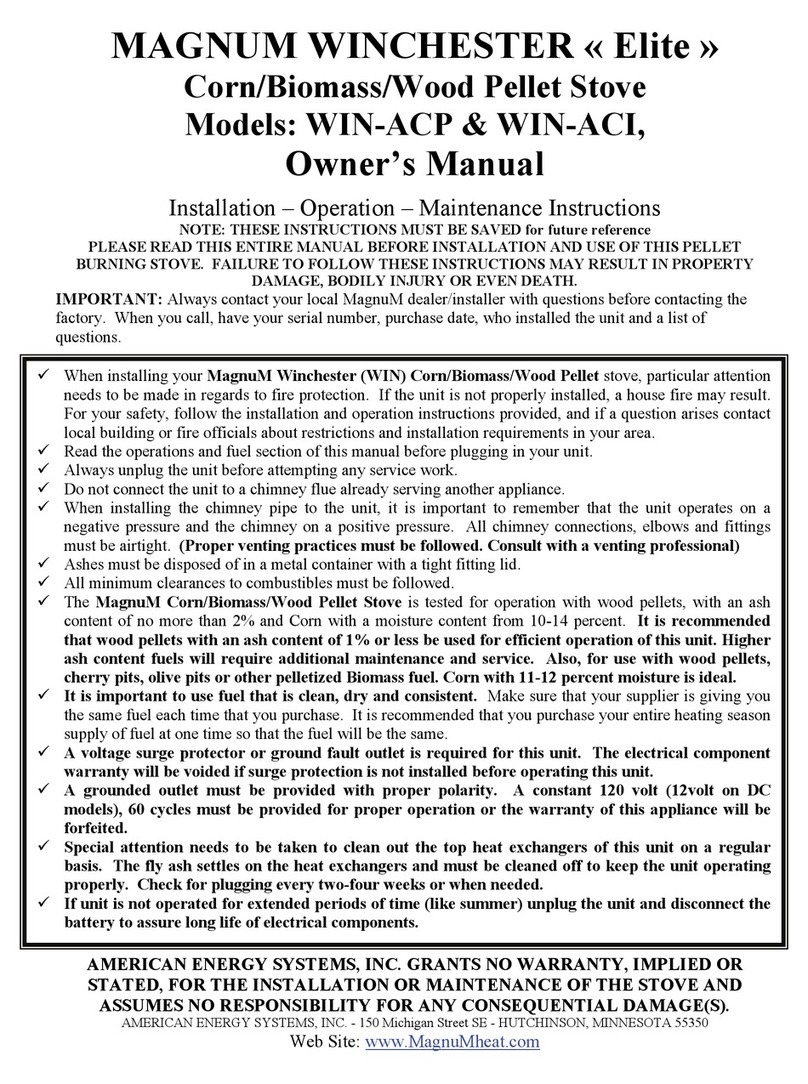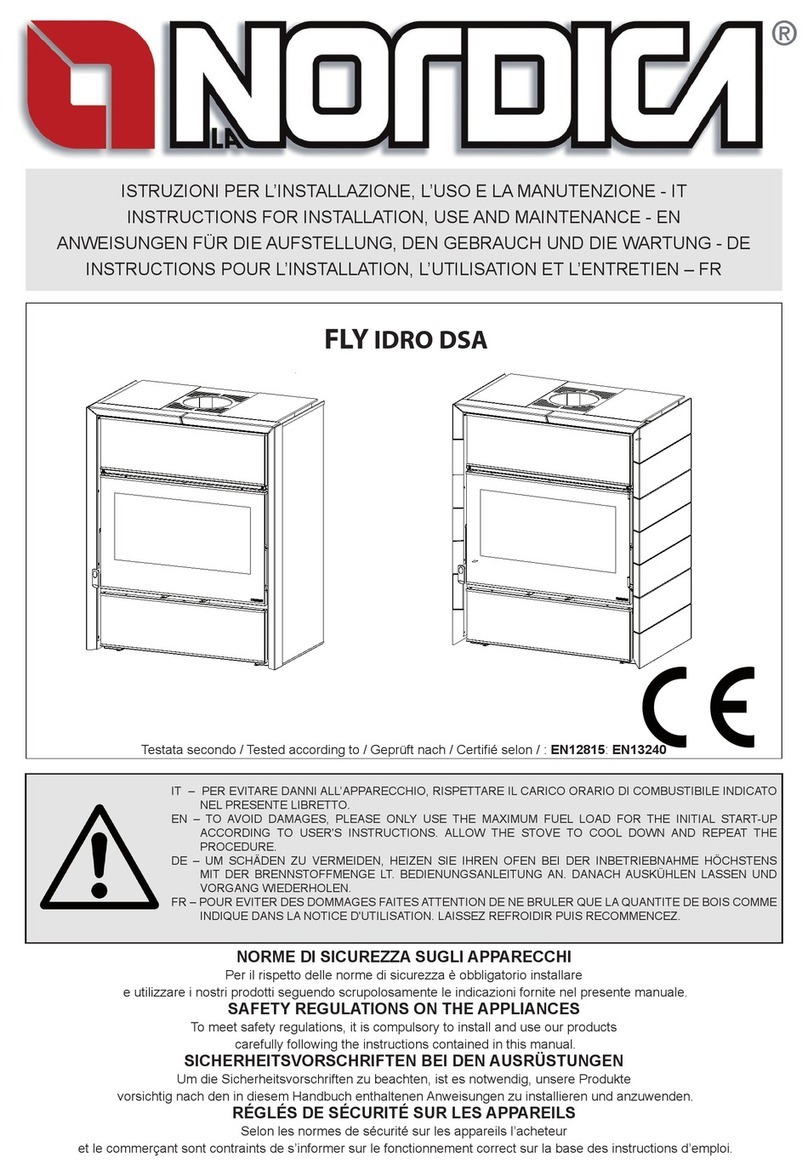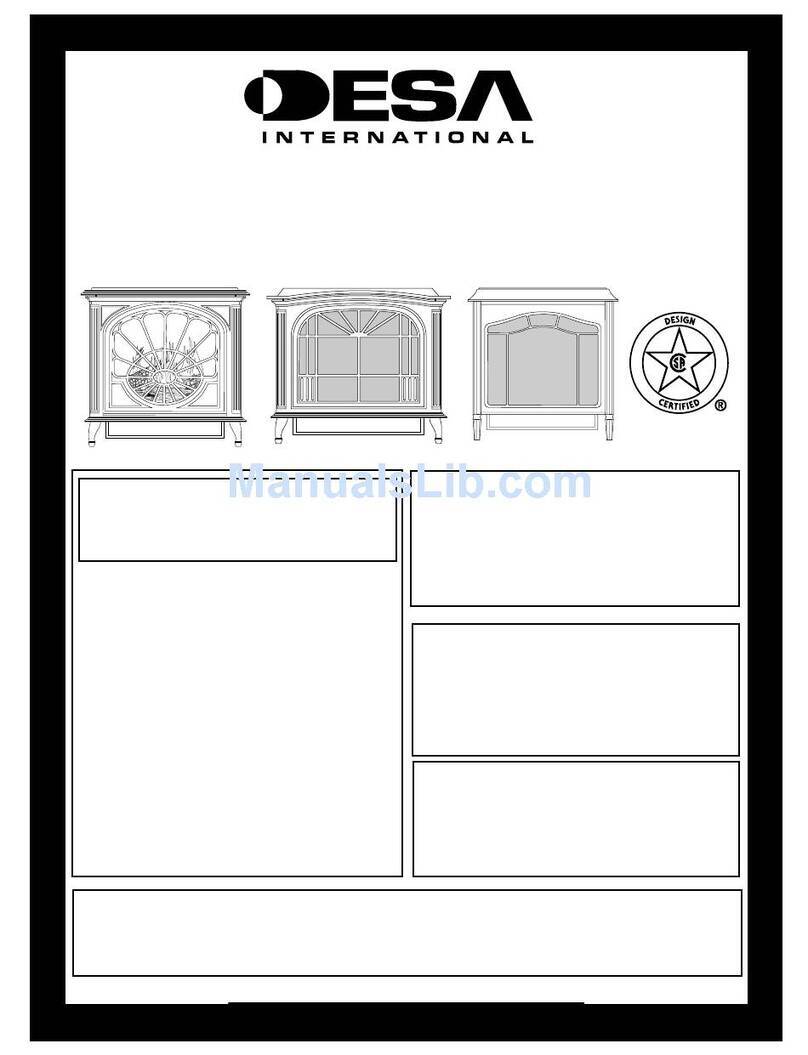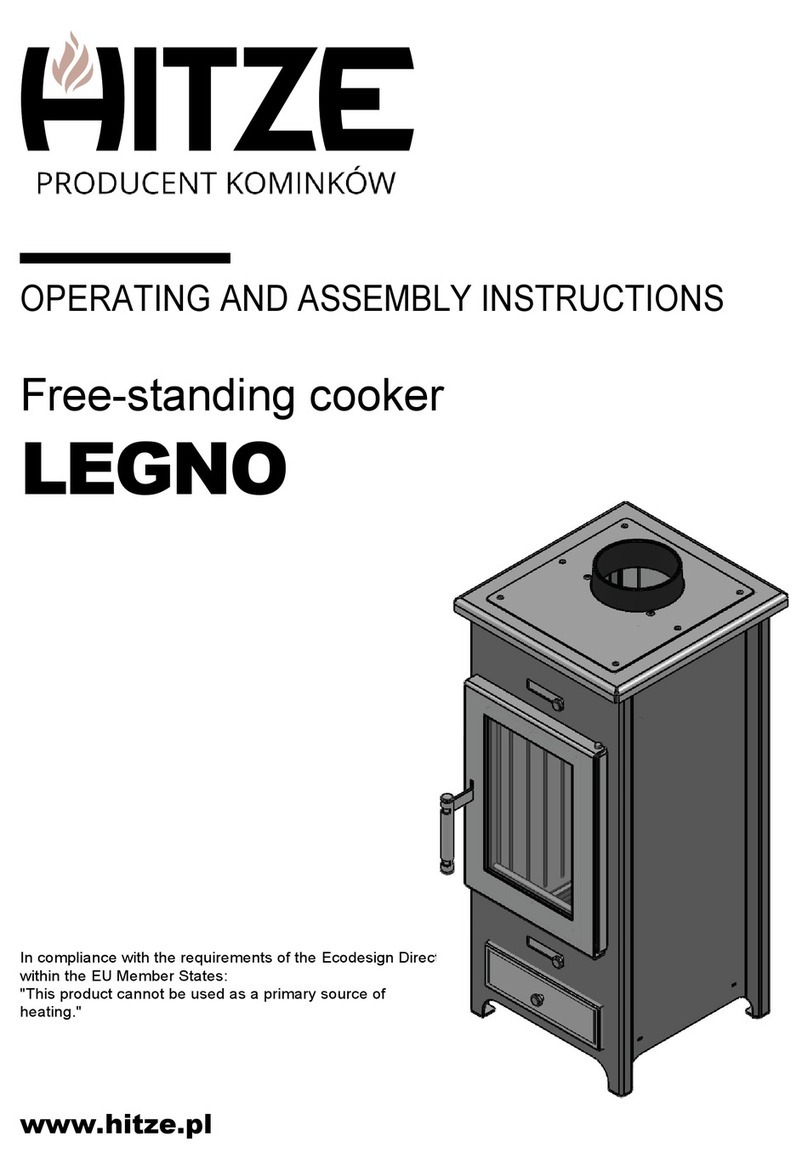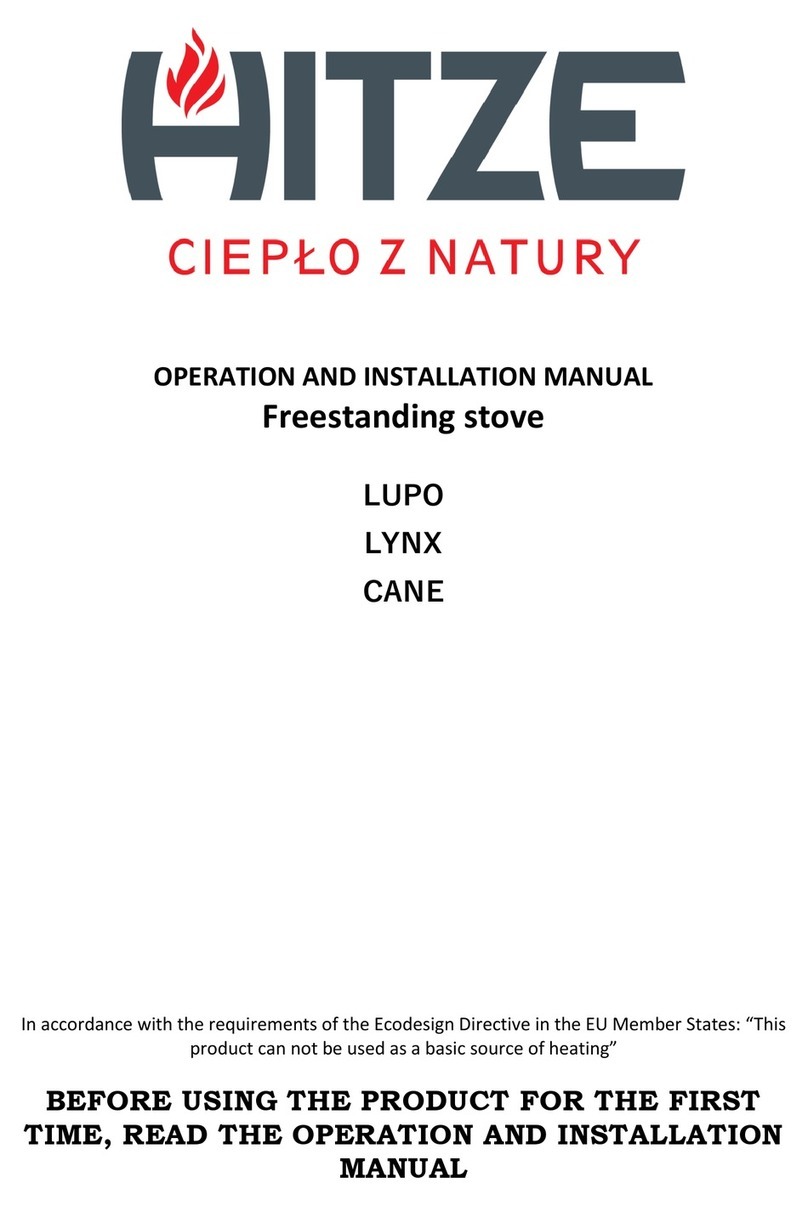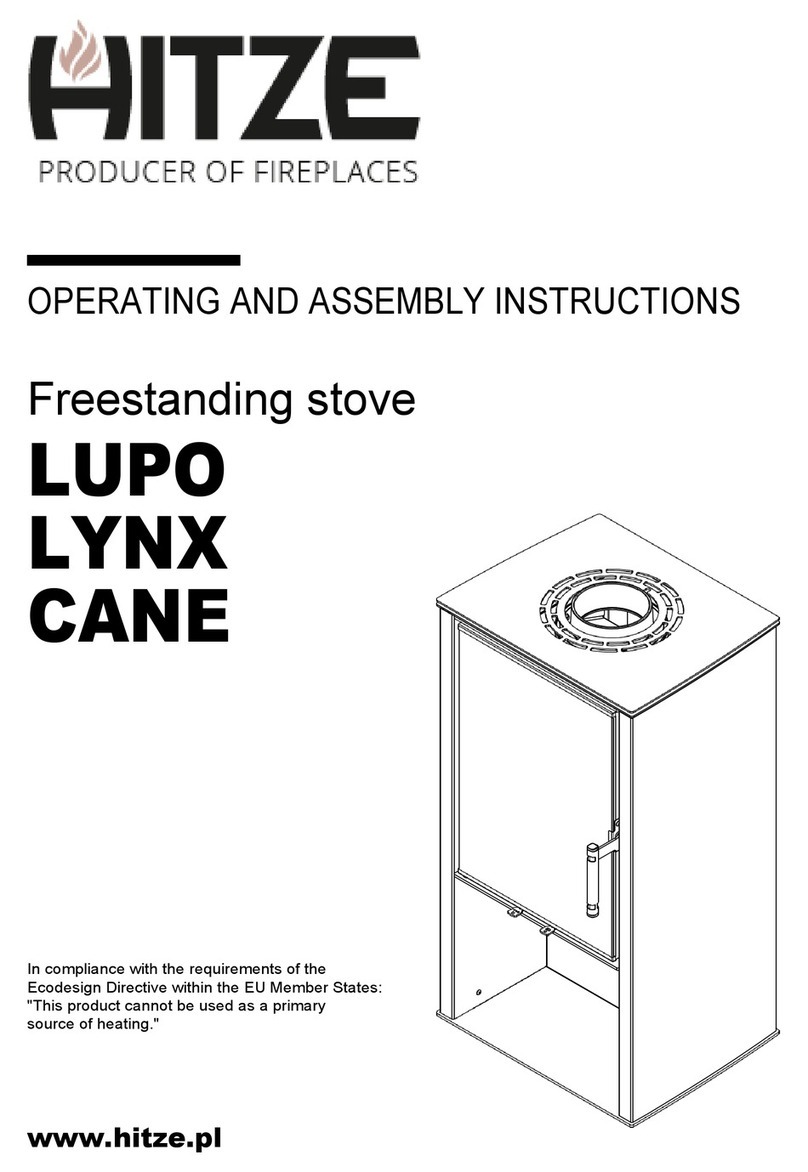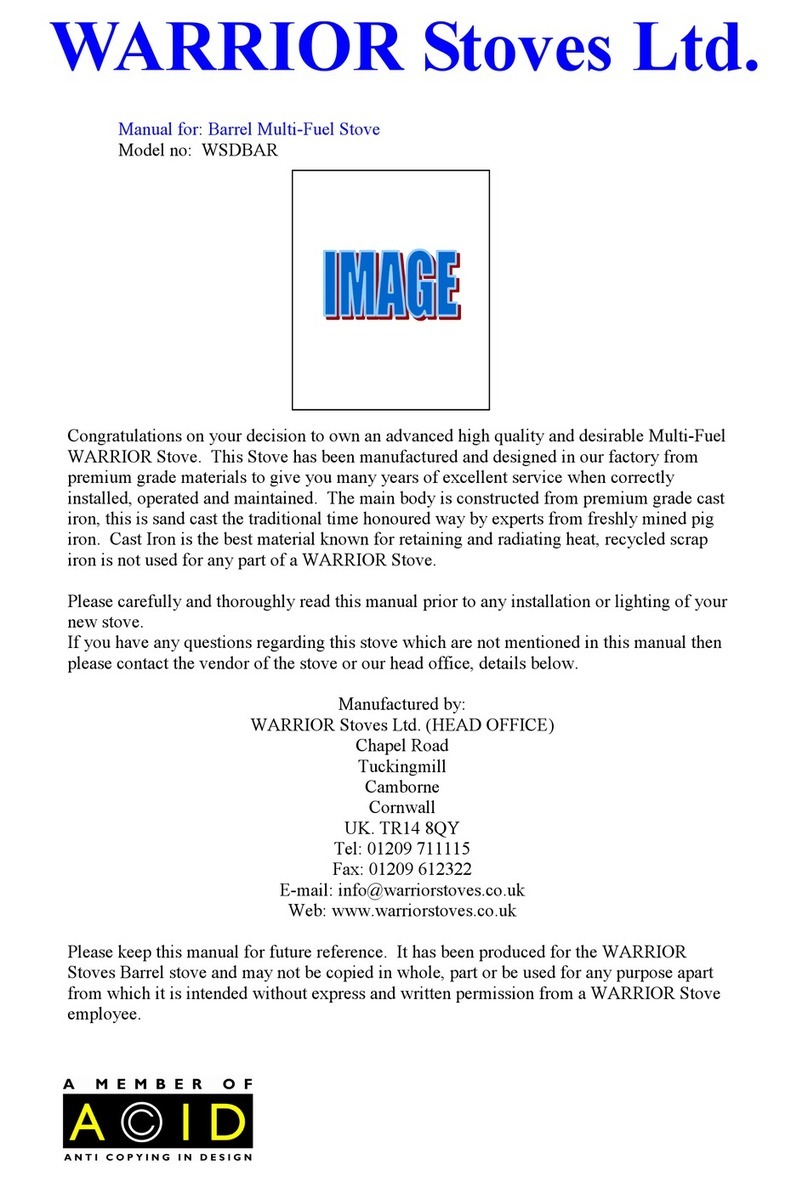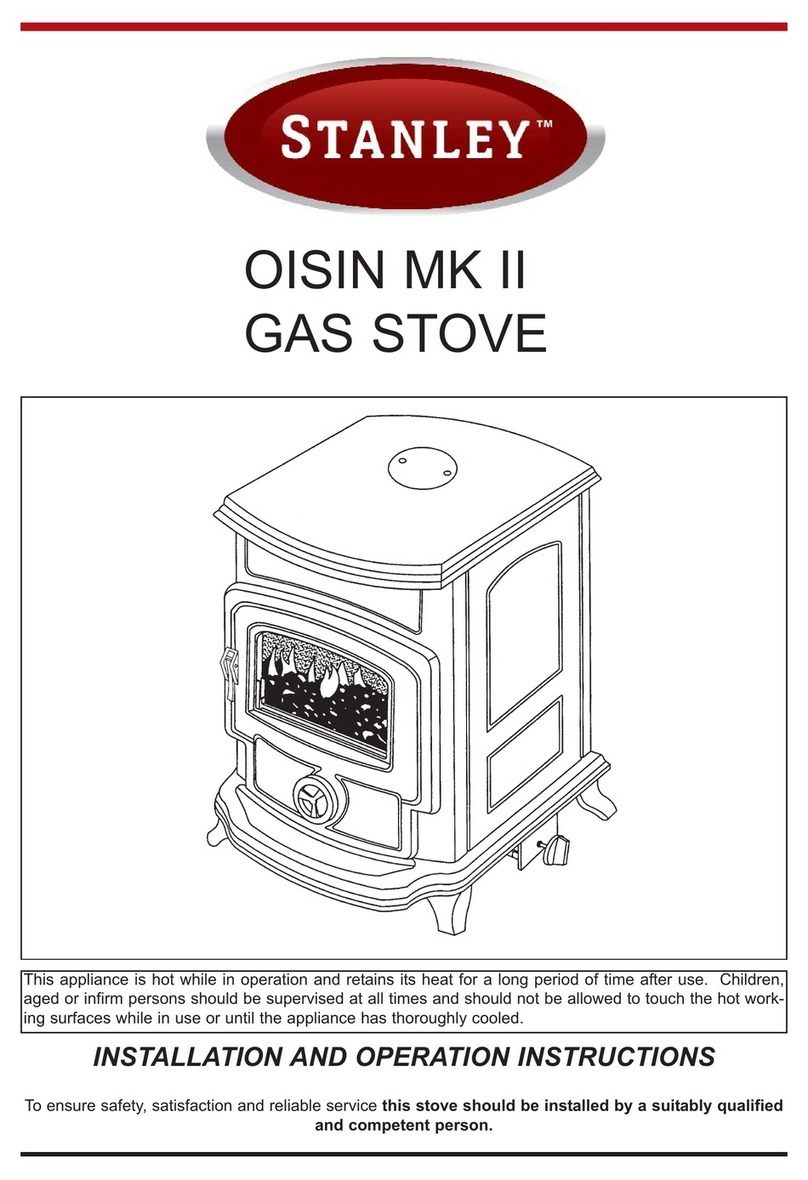
13
3.1. Getting ready for the start-up
Before lighting the stove for the rst time, it is necessary:
▪to remove any labels, paper stickers and accessories from the body of the stove or hearth to eliminate the
risk of re; the same applies to transport safety devices;
▪to check if the deector/s, ceramic ttings are mounted correctly and were not dislodged from their
correct position during installation (any discovered mounting errors must be corrected). Non-removal of such
errors may hinder proper functioning of the stove. In the case of stoves with multi-pane glass doors,
it should be checked if particular glass panes did not become loose during transport or use;
▪to check the operation of:
• mechanism regulating the air inow into the combustion chamber (cold air inow throttle);
• front door closing mechanism (hinges, handle);
3.2. Lighting the stove
Before lighting the stove, please do the following:
▪arrange a stack of rewood in the hearth, starting with larger pieces of wood, followed by medium-sized
pieces of wood and then by small chips of wood for re lighting – light it with a match;
▪set the primary air regulator in the fully open position and the secondary one in the minimum;
▪after lighting the re, the door of the stove must be closed;
▪when the fuel is burning properly, adjust the burning process with air regulators to ensure a steady and
calm rate of burning (this causes only a small portion of the primary air to be fed under the oven grate;
secondary air throttle to max - more air is fed into the air curtain system, protecting the glass from sooting
and to the gas afterburning system in front of the cartridge; opening the air damper at 100% - maximally
to each other, causes very intensive combustion of fuel);
▪it is recommended, at the nal stage of burning, to open the door and move the remaining embers onto
the grate, using a poker, so that all fuel is used up;
▪test the functioning of other components of the installation (when the re is lit for the rst time).
NOTE:
Because of too big amount of air is fed under the grate and to the after burning system, too much fuel
in the combustion chamber causes the production of a large amount of wood gas and the glass pane
may become temporarily covered with soot.
When the mechanism is moved to its rightmost position, it will completely cut o the inow of air
to the combustion chamber and the re will be gradually put out.
If the grate needs to be unclogged, stir accumulated ash with a poker or the lever of the grate.
During the rst hours of using the stove, it is recommended to load the stove with a small amount
of fuel, i.e. up to 50% of the normal load.
When the stove is lit for the rst time, water may condense on the internal walls of the combustion
chamber. This phenomenon is normal and is caused by the condensation of water vapour contained
in combustion gases. It should disappear after the combustion chamber has heated up.
JIf combustion gases escape from the stove chamber, the position of the combustion gas throttle
should be adjusted and the chimney draught should be increased.
Before the next lighting, clean the hearth from remaining ash.
4. USE
The surface of the stove is covered with a special heat-resistance paint. After lighting the stove, this paint
initially becomes soft (care must be taken not to scratch it then) and then hardens. Due to this process,
an unpleasant smell is produced when the stove is lit for the rst few times. It is recommended to make sure
that the room is well aired during that time. If pets or birds are kept in the room, they should be temporarily
moved to another place. In the initial stage of using the stove (for about 2 weeks), the manufacturer recom-
mends maintaining a small ame by burning a smaller quantity of fuel at a lower temperature. This method
of lighting the stove is intended to prevent cracks in the ceramic lining, to avoid deformation of the stove




















